Wednesday, 12:00pm
15 January 2025
Pure design play
Two of Ken Garland’s games for Galt Toys are back in circulation. By Andrew Howard

Think of Ken Garland (1929-2021) and it is likely that the 1964 ‘First Things Manifesto’ comes to mind, writes Andrew Howard. Although the Manifesto was certainly the expression of a lifelong commitment, it was nevertheless just one moment in his long career as a professional graphic designer (see ‘Last things last’ in Eye 83). Within his varied practice, Garland’s work for British toy manufacturer Galt Toys stands out.
Garland started working for Galt in 1961, and in addition to designing all the company’s promotional materials, he later conceived and designed toys and games for them. Two of his late 1960s games, Connect and Anymals, were especially successful but have been unavailable for years.
Right. Anymals box. Top. Connect. Games originally designed for Galt Toys by Ken Garland Associates, now published by Architoys. All photographs by Attilio Fiumarella.
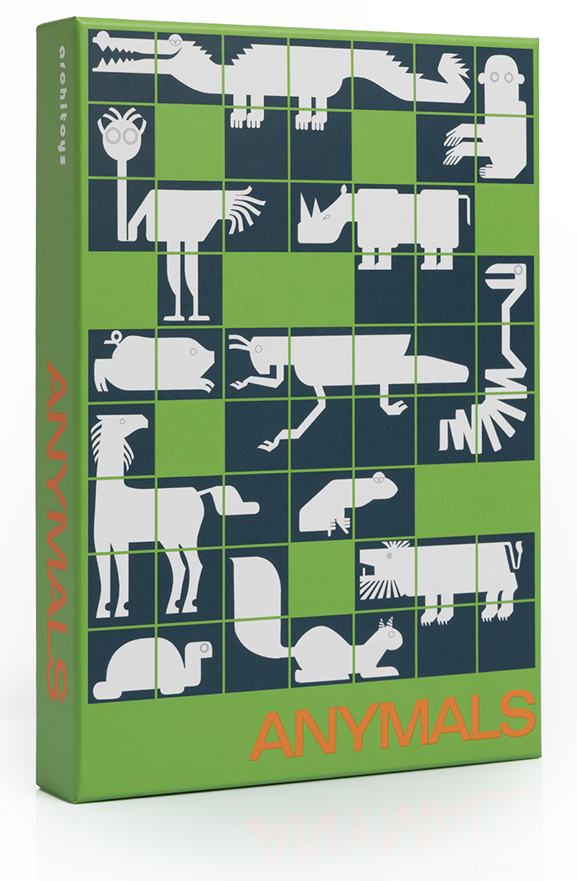
Last year I was contacted by Porto-based Italian architect Marco Ginoulhiac, owner and founder of Architoys, who was in search of a designer to work on a reproduction of Anymals. Ginoulhiac had been in touch with the Garland family and obtained permission to reproduce Anymals, Fizzog and subsequently Connect. He was unaware of my friendship with (and admiration for) Garland when he first approached me, so it was a fortuitous coming together for us both.
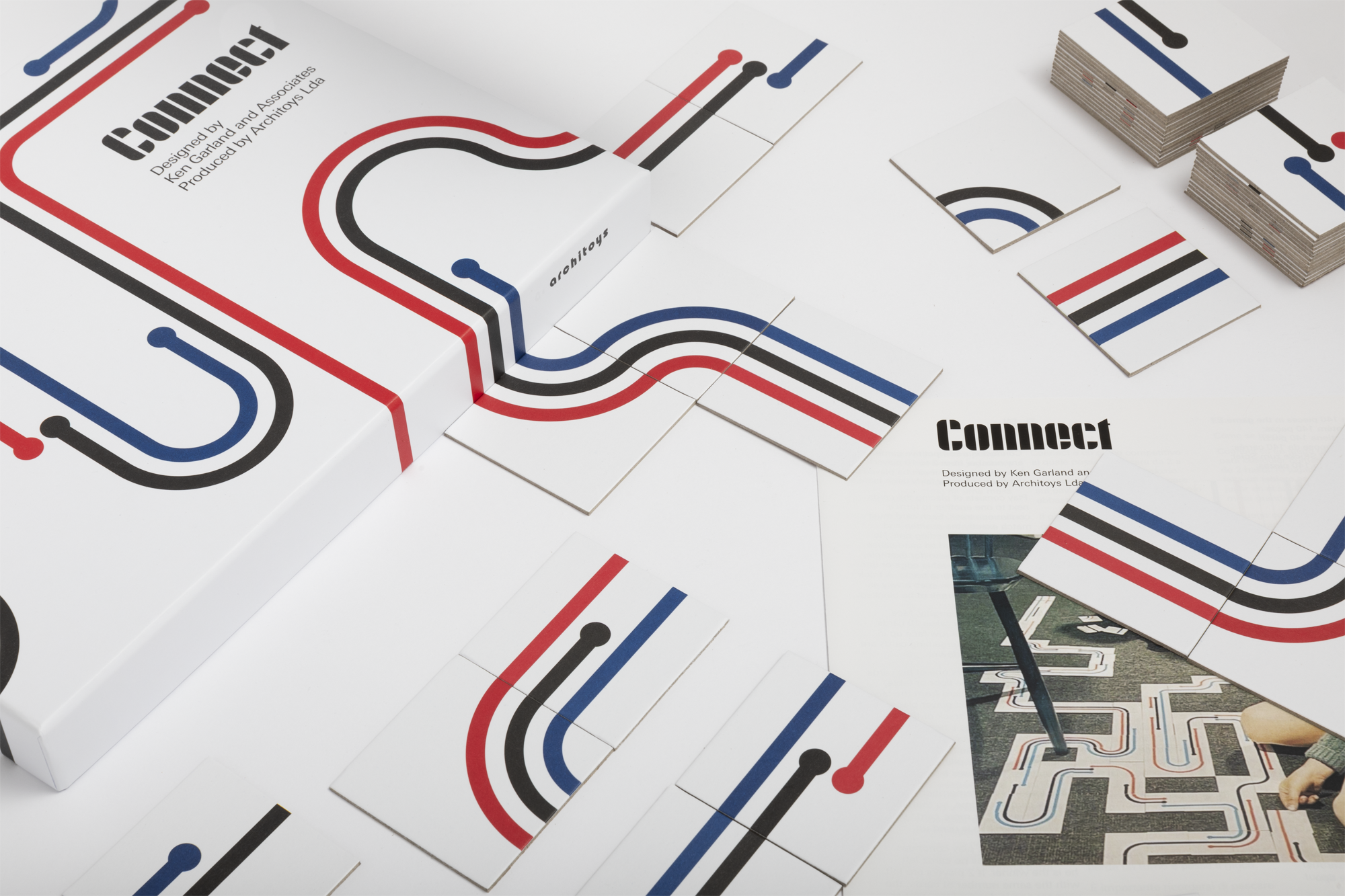
These games were the result of particular conditions and collaborations that Garland explains in a 2010 interview* conducted by Ieuan Hopkins and Sarah Wood for The Museum of Childhood. He recounts how, in creating Ken Garland Associates (KGA) in 1962, he organised the company’s work schedule so that they could take Friday afternoons to do whatever they wanted. He would use this ‘free time’, among other things, to think of ideas for toys and games. One of these was Connect.
The idea was first mooted together with his associate Bob Chapman, and influenced by the London Underground diagram: ‘We worked on it together. It didn’t fruit [sic] with Galt until after Bob had left … but I developed it together with other people working in the studio, and it was our joint notion.’
‘I was a good friend of Harry Beck, the inventor of the London map or diagram, and I knew there was a game there somewhere and that proved to be. If you look at the original version of Connect you can see its link with the London Underground diagram.’
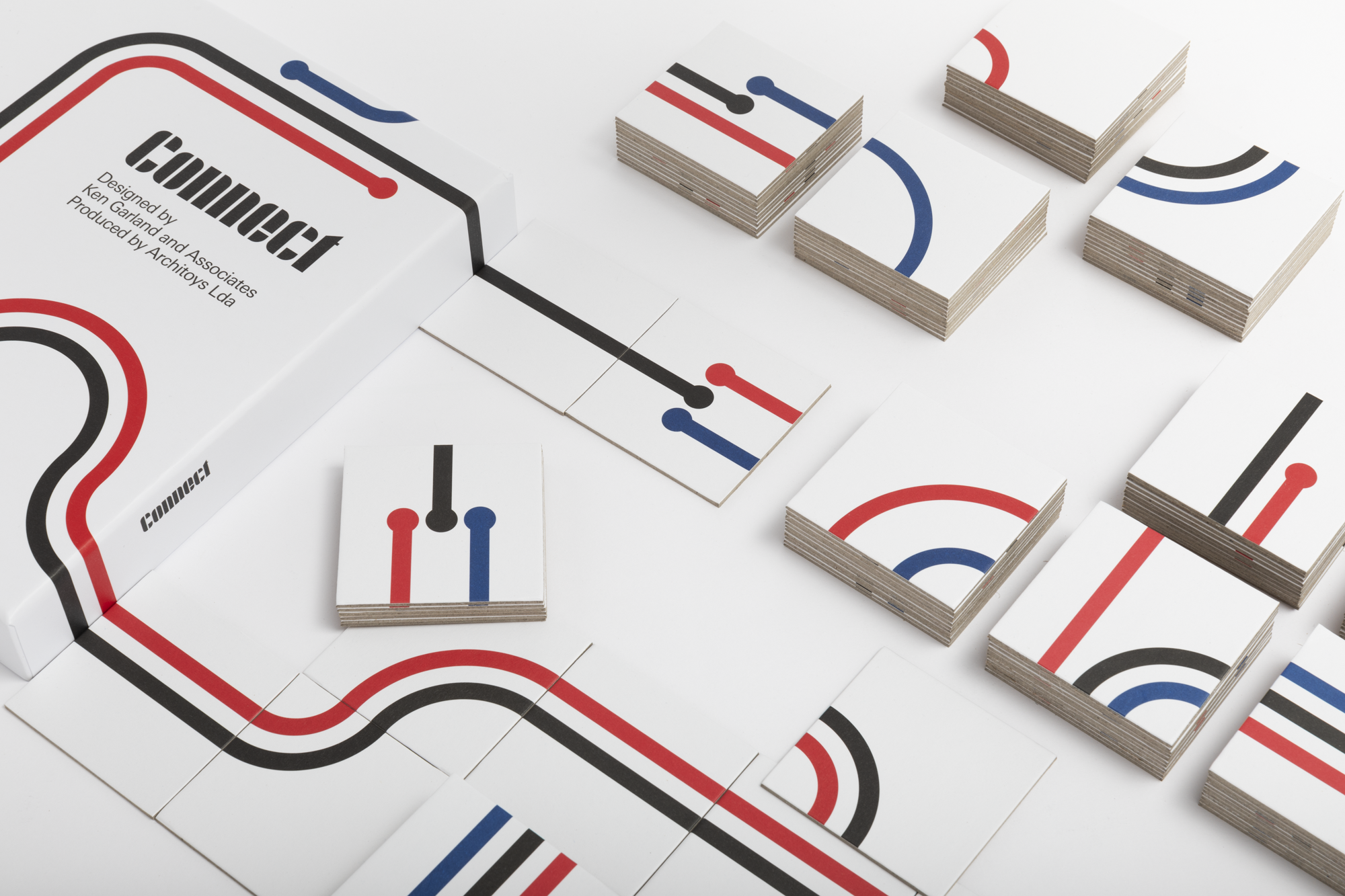
Connect was the most successful game that Garland designed for Galt. Using simple linear structure, colour, and gestalt (pattern recognition), with no pictorial references and related associations, the game is pure graphic design. It consists of 140 cards, each displaying different numbers of straight and curved lines in black, red and blue. The aim of the game, based on the number of lines and the colour sequence, is to connect the cards – a task that can be achieved in all manner of combinations.
When the rights for the game were sold to German manufacturer Ravensburger it became Rivers, Roads and Rail, changing from simple geometric forms into a pictorial version. Garland, who kept the UK rights to the game, was happy enough with the change but recognised that many others were not and received many requests about reviving the original.
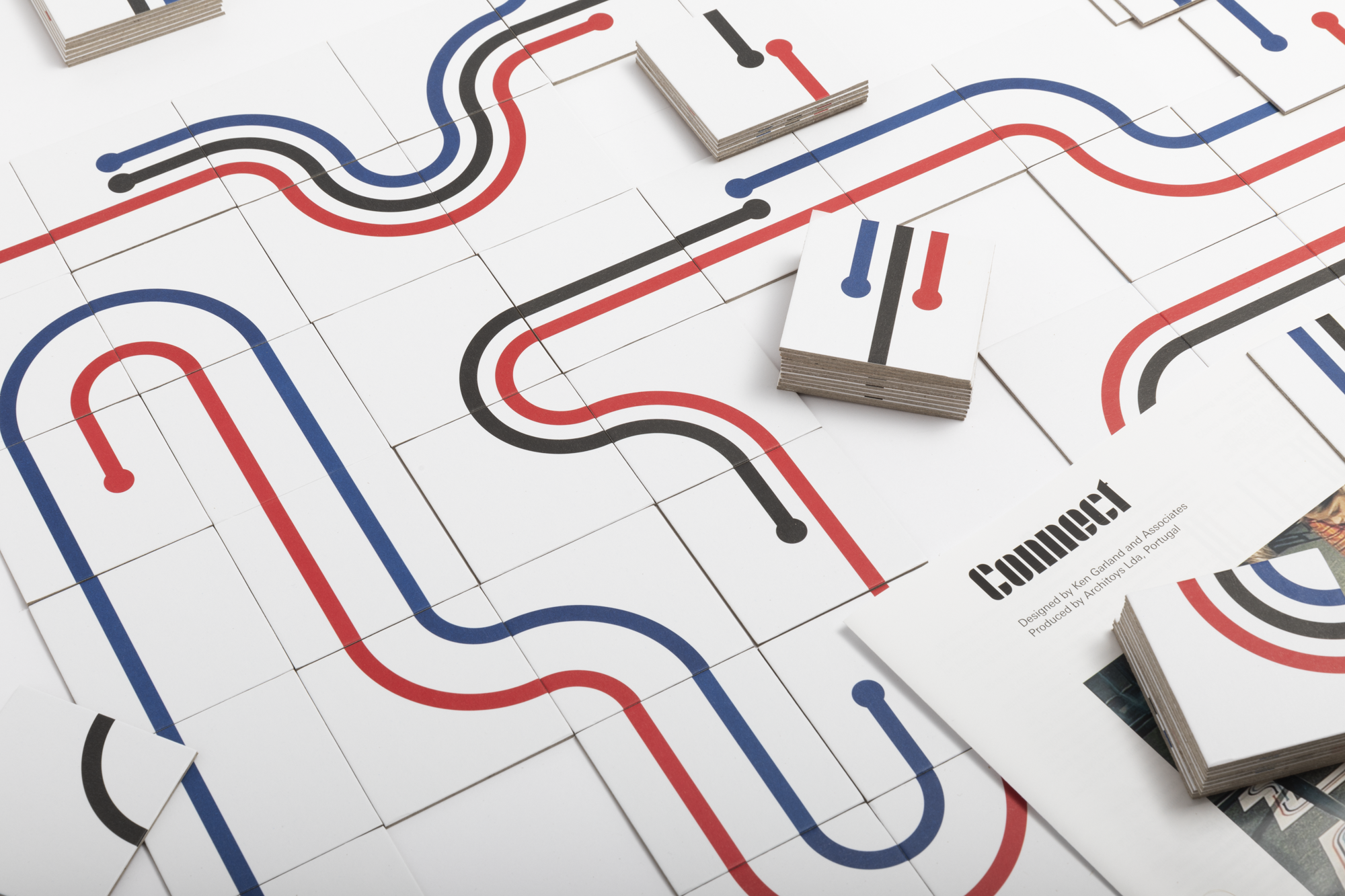
Another Friday-afternoon inspired game was Anymals. Czech illustrator Daria Gan, a regular collaborator with KGA, drew some delightful animals whose playfulness extends to their naming: ‘Squeaky Squirrel’, ‘Calamity Camel’, ‘Wonkey Monkey’ and more. The game comprises 96 cards. Each 7cm square card contains part of one Anymal. The objective of the game is to build as many complete animals as possible.
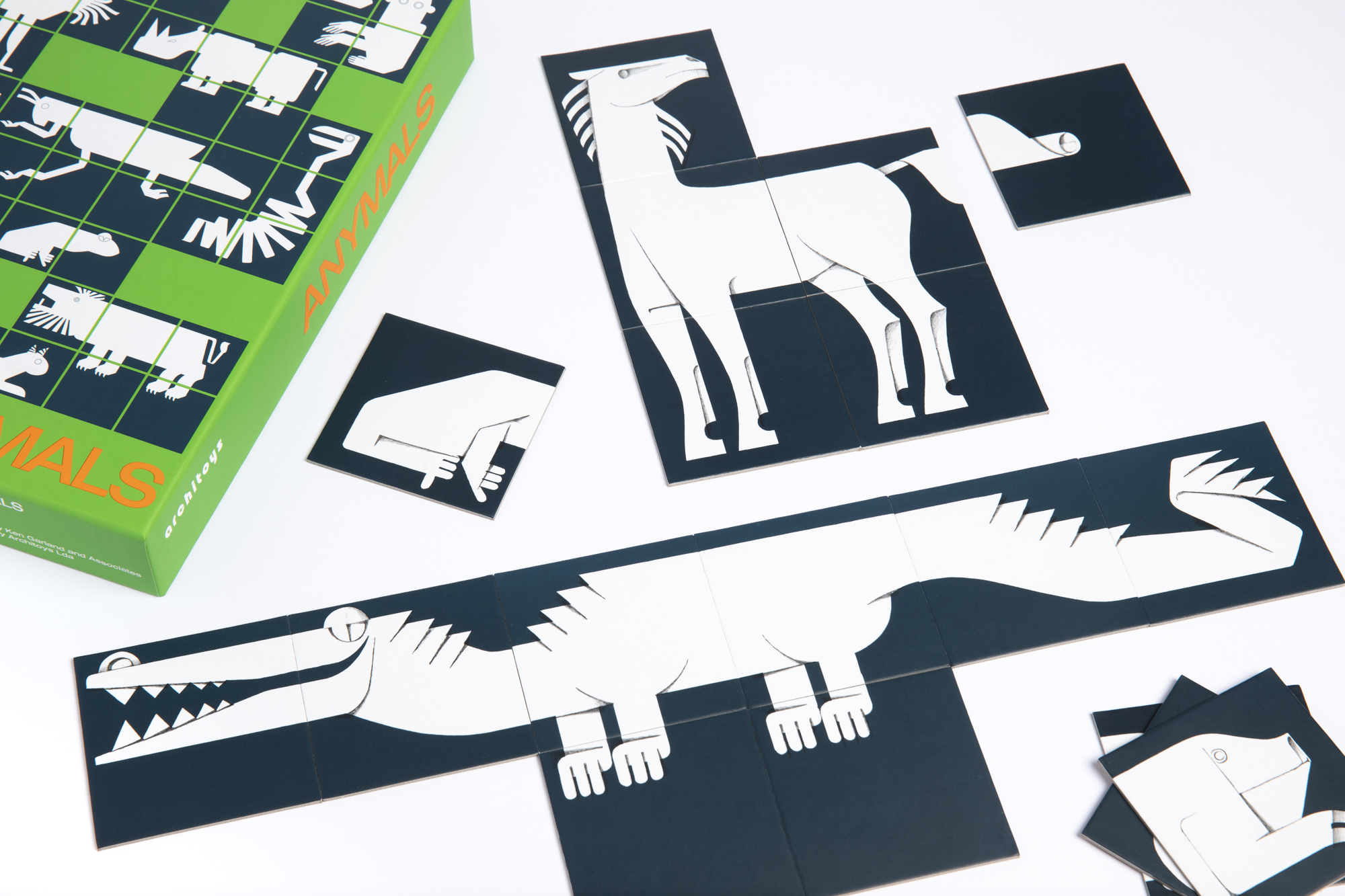
But the real pleasure is contained not so much in assembling the animals in their ‘correct’ form, but in being able to create whatever combinations you fancy. ‘There are specific animals that can be made,’ says Garland, ‘… but the best fun is [to be] had from joining up things that are not made to join.’
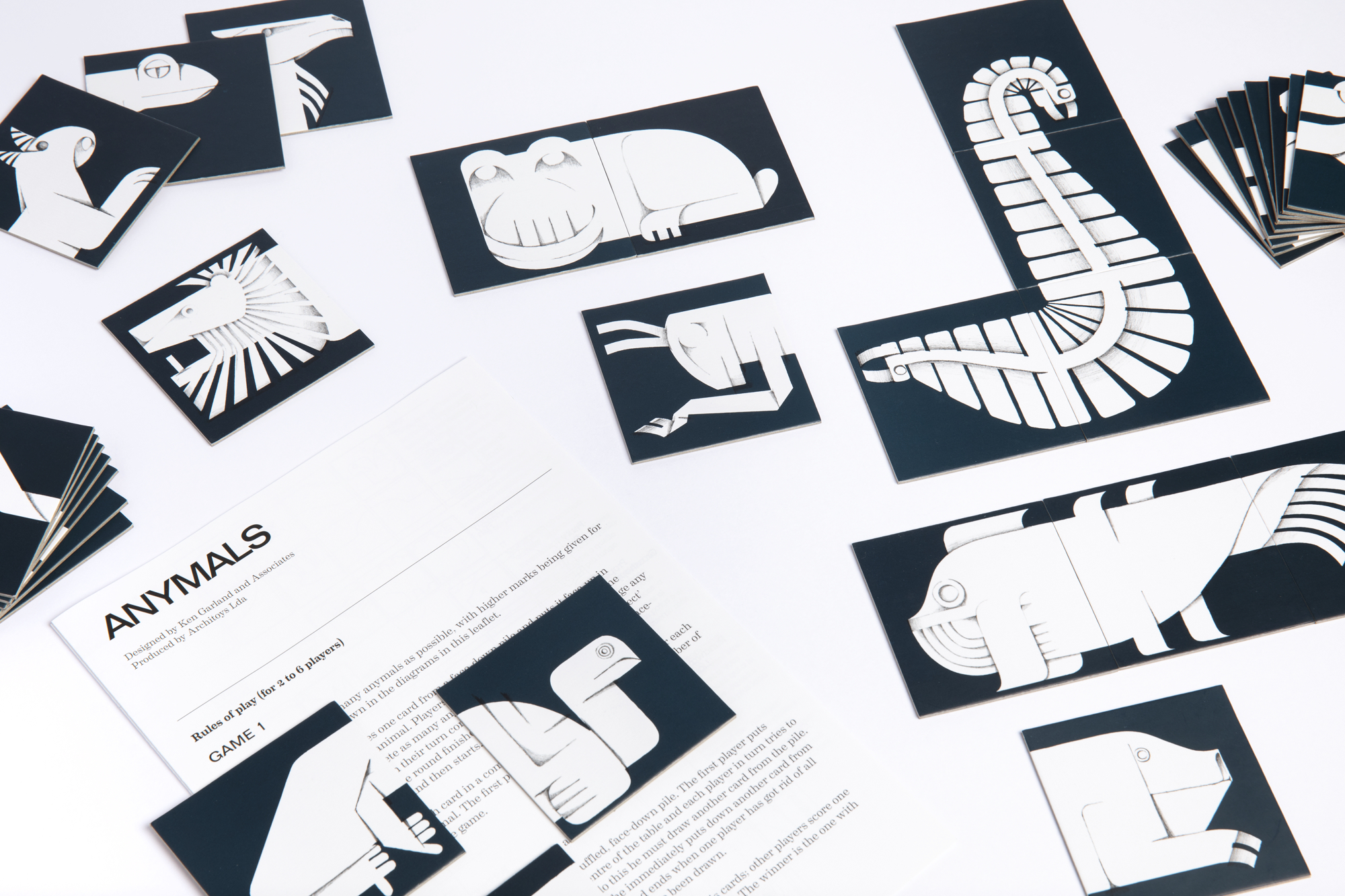
In reproducing these games the intention from the outset was to remain as faithful to the originals as possible, in the design of all the elements; the cards, the packaging and the instruction sheets. The necessary first step was to see if any original artwork existed. Ken’s son Ben Garland put me in touch with Colin Bailey, who worked with Ken and has been responsible for organising his archive since Ken’s passing in 2021. It was Colin who invaluably located the original analogue artwork for Anymals, which was subsequently photographed, and from which I was able to produce digital files and reconstruct the game. No artwork existed for the Connect game, so it had to be recreated from original copies of the game, from which I also redrew the stencil lettering of the name.
We are hugely satisfied that both of these games are back in circulation, and for this are indebted to the Garland family and Colin Bailey for these games being available once again.
* Project: British Toy Making Project. Ken Garland Graphic Designer. Interview conducted by Ieuan Hopkins and Sarah Wood, October 2010. Transcribed by Georgina Lever, October 2010. Edited by Ken Garland and Laura Wood, August 2013. Copyright © 2010 Museum of Childhood.
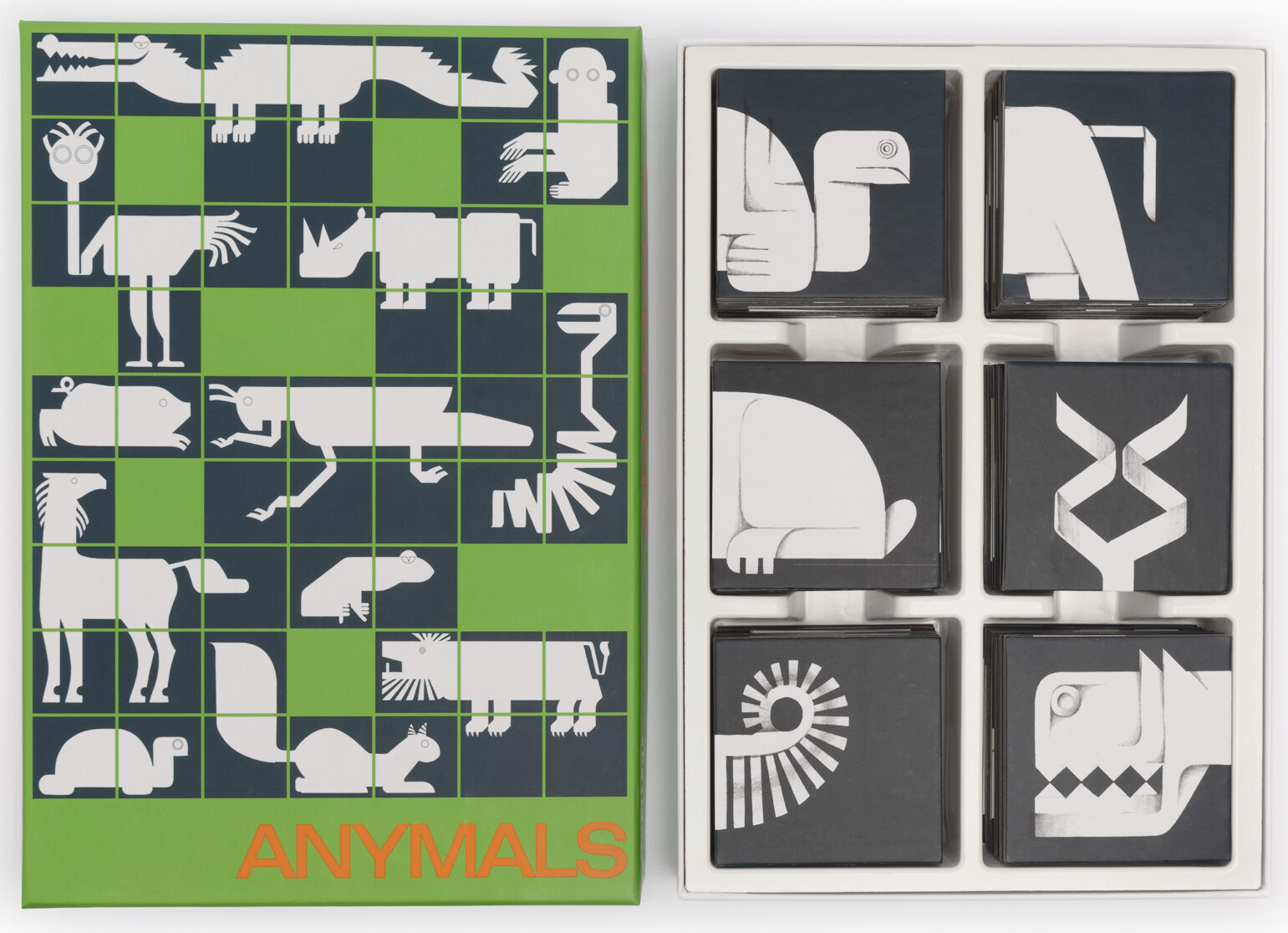
Andrew Howard, graphic designer and educator, Porto, Portugal
Eye is the world’s most beautiful and collectable graphic design journal, published for professional designers, students and anyone interested in critical, informed writing about graphic design and visual culture. It is available from all good design bookshops and online at the Eye shop, where you can buy subscriptions and single issues
